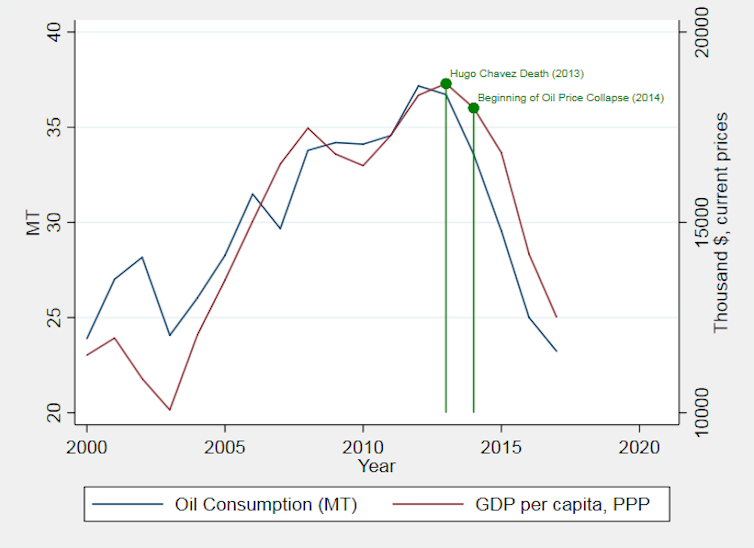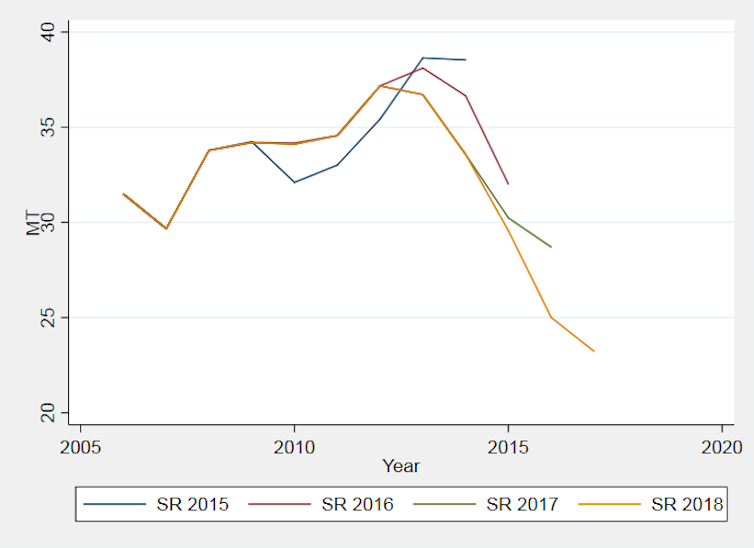EDINBURGH — Africa analysts watch Venezuela closely because its economic model is admired in some quarters. Julius Malema of the Economic Freedom Fighters is a known supporter of Venezuela policies. Not as obvious – and perhaps more worrying because it is the ruling party and remains powerful – is that the ANC, in its approach to Eskom, is wittingly or unwittingly doing a Venezuela number on South Africa. Venezuela’s energy system is in deep trouble, as is South Africa’s. While Venezuela is far down the path of economic collapse, with its economy shrinking dramatically in recent years, South Africa is still in struggle mode, recording modest growth of just over 1%. However, as this piece about Venezuela’s problems makes clear: energy is a key indicator of a country’s economic health. Recently, The New York Times cautioned its readers that Cyril Ramaphosa assumed power promising a “new dawn”, but – just over a year later – he can’t keep the nation’s lights on. The take-away is that much more needs to be done – and fast – to fix Eskom in order to boost economic growth and impress investors. – Jackie Cameron
Venezuela’s economic collapse is laid bare when you look at how little energy the country is consuming
By António Carvalho and Jan Ditzen*
The country with the most oil reserves on the planet is facing a total economic crash, with wildly conflicting inflation estimates – as high as 10,000,000% if the IMF’s projections for this year are correct. There has been much discussion about the collapse in Venezuela’s oil exports, intensified by US sanctions against the state oil company PDVSA, which substantially prevents any oil trading between the two countries and takes away a steady income stream for the country. To understand the scale of the crisis, however, it is vital to look at what has been happening to energy consumption inside the country itself.
Oil consumption in Venezuela fell 37% in five years up to 2017, a reminder that the country was struggling under the Maduro administration long before the latest sanctions, which came after opposition leader Juan Guaidó announced himself the country’s rightful president in January. Unfortunately, the oil decline is not an environmental achievement but a worrying symptom of Venezuela’s economic conditions – GDP is expected to have fallen 50% between 2015 and 2019.
In a country where economic data is scarce, different oil products can be used as proxies for different kinds of economic activity. Venezuela’s oil and fuel oil export numbers give insights into the country’s incoming cash flow from abroad, for instance, while diesel consumption is a partial indicator for transport, industry and the power sector. Gasoline is a proxy for transport activity as well.
Diesel consumption declined by 11% on average each year in 2013-17, and gasoline shows a similar pattern with an average annual decline of 7% or by 27% over the same five-year period. Together, the two fuels account for approximately 70% of total oil demand in the country. From the graphic below, you can see that the collapse in oil consumption and GDP are staggeringly similar.

BP Statistical Review 2018
This is not to say that the oil consumption estimates from the likes of BP are anywhere near perfect. Multiple Venezuelan official energy statistics ceased to be published between 2012 and 2015, leaving experts to build the best possible estimates from multiple sources.
BP figures for total oil consumption have been consistently revised downwards every year in recent history, as reality always punches below expectations. You can see this in the following graph, where each coloured line represents a different year of the BP Statistical Review and the estimates included for Venezuelan oil consumption: the yellow line represents the 2018 edition, whose numbers are mostly lower than the estimates in previous years’ editions.

BP Statistical Reviews 2015-18
The view from the ground
People are not driving around anymore in Venezuela. To make things worse, 90% of buses were reportedly out of action by mid-2018. This is a society that just doesn’t go out for work or travel. Businesses are also using less transportation, since they produce fewer goods than they used to – including food. The last implication is terrifying, and can easily be missed when solely looking at numbers. It is possible to survive without a car, but not without food. A litre of milk can now easily cost a tenth of a monthly salary.
Energy prices have been severely distorted by a combination of explosive inflation and heavy fuel subsidies. By mid-2018, you could buy 3.5m litres of gasoline for a single US dollar, but could barely buy any basic food item. Yet even if you have enough money to fill up your tank, it is increasingly difficult to find fuel – and the cost of spare parts is exorbitant.
The future of oil output looks equally bleak. Production is quickly collapsing, with refineries only running at an incredibly low 22% of capacity. The power system is actually taking a double hit: the part that depends on fossil fuels in the form of natural gas, diesel and some fuel oil is crumbling while the part driven by hydropower is being undermined by very low rainfall caused by changing climate patterns. The net result has been thousands of power failures. A dry year could aggravate things further, requiring extra fossil fuels that the country is incapable of producing or affording.
As the sanctions continue to bite and hyperinflation rages on, Venezuela’s oil consumption decline looks set to reach levels last seen in the 1990s. The country began rationing gasoline in February, and is now in the awkward position of importing refined fuels from Russia, India and Spain at “horrifying” premiums, according to an executive of PDVSA. One consequence of the sanctions is that they have affected Venezuela’s ability to transport heavy oil from its own oil fields, since this is made easier by adding diluting agents that are often imported from the US.
The perfect storm of sanctions, inflation, production problems and climate change risks to power supply leaves us wondering how long it might take before the energy system comes to a total halt. As new oil statistics are published in the coming months, everyone from energy analysts to Washington policy hawks will be poring over them to try and understand where the country goes from here.![]()
- António Carvalho, Research Associate (Centre for Energy Economics Research and Policy), Heriot-Watt University and Jan Ditzen, Research Associate (Centre for Energy Economics Research and Policy), Heriot-Watt University. This article is republished from The Conversation under a Creative Commons license. Read the original article.

